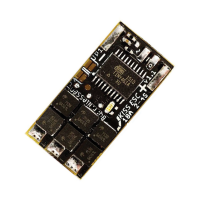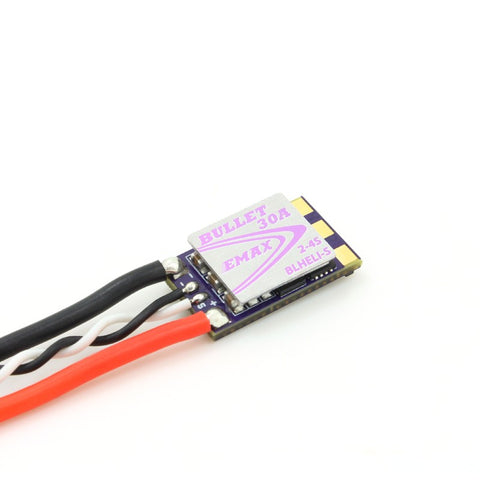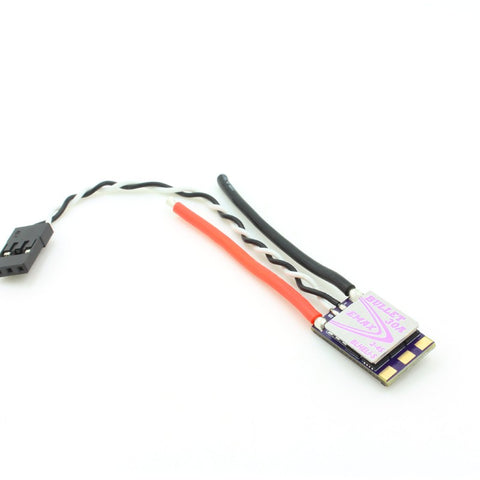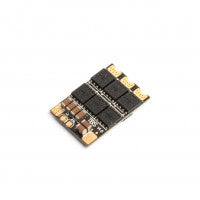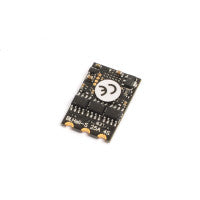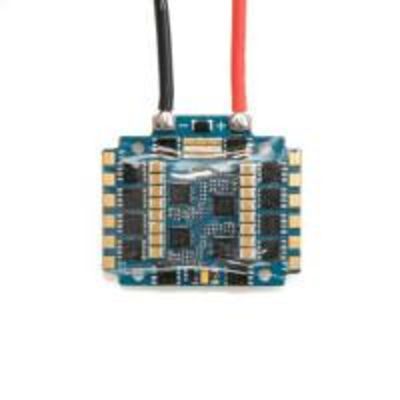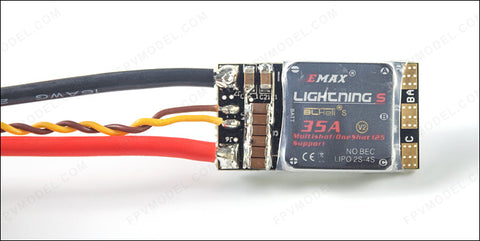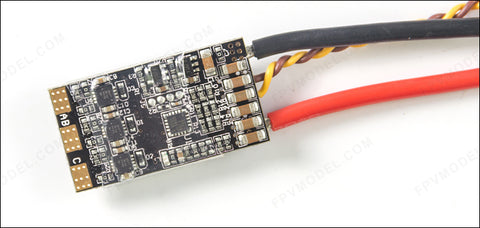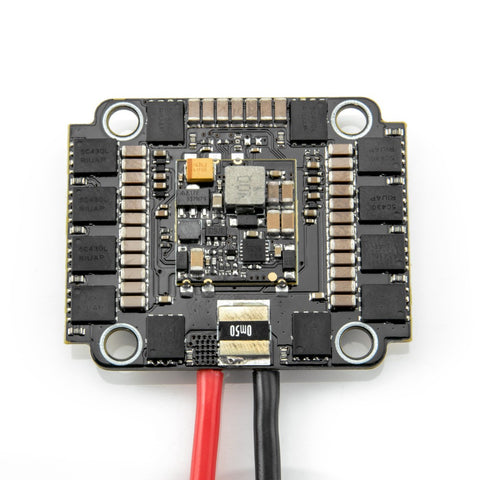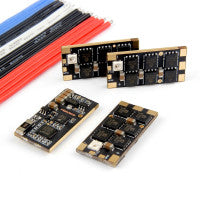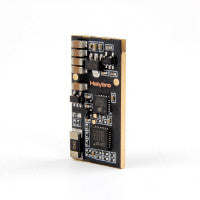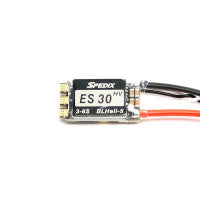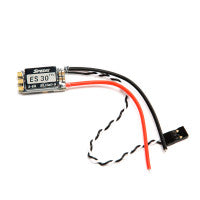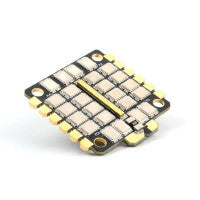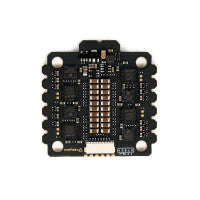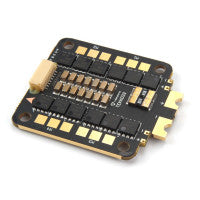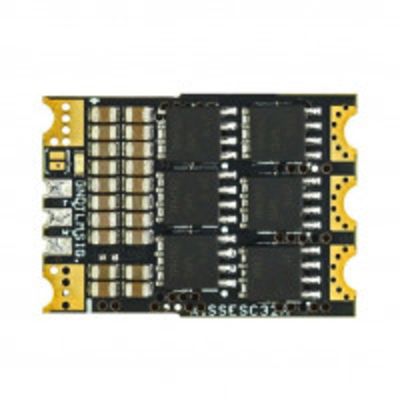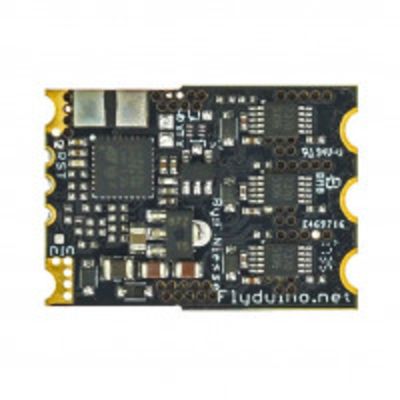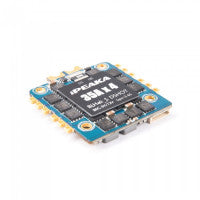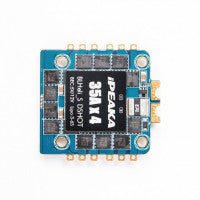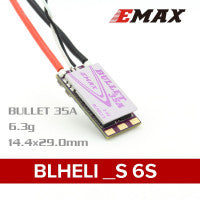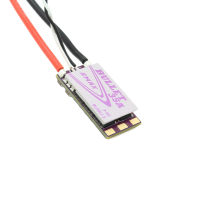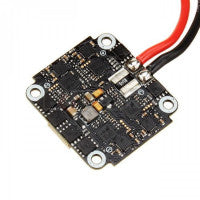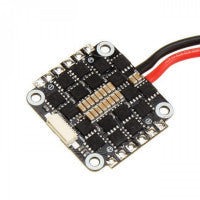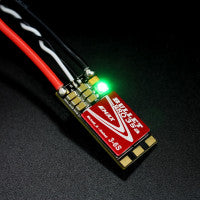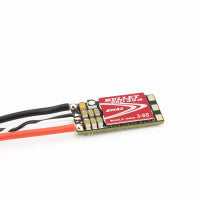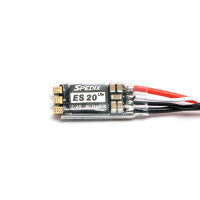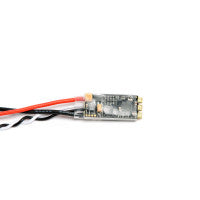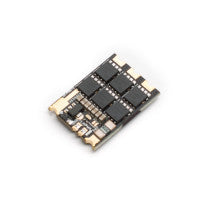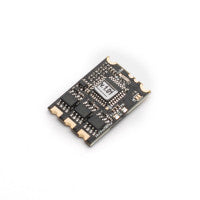KISS 2-4S 18A ESC (v1.2)
Flyduino KISS ESC's are well know for their high performance and tech.
Super light weight and low profile, KISS 18A ESC's deliver incredible results from a very tiny package. There is not an other ESC out there that stays as cool and reacts as fast while pulling as many amps as the KISS 18A v1.2 ESC series
A fast throttle response is essential for competitive racing and technical free style flying, KISS ESC's have one of the fastest (TR) in the industry.
Optional Oneshot125 PWM gives you a throttle signal that is 8X faster than standard signals and is meant to be sent instantly after each FC-control loop.
Oneshot signal transmission is fully integrated into the esc and is easily activated now without needing the solder jumper on V1.2, giving you a reactive, flawless experience with your Multirotor
New in 1.2:
Auto input detection: Oneshot or PWM
Jumper 1 - new function:
-
Open: Low Pass Filter - ON High-frequency spikes will be filtered for some degree to prevent damage to the ESC and motor. As long as the flight style is not hard fast acro, you will not notice the low pass filter. We recommend to keep the filter ON for most setups, turn it OFF only if you know exactly how the PID FC is to set for your specific setup.The low pass filter prevents the overheating due to variations in the input signal, but also reduces the speed of the throttle reaction at strong signal changes.
-
Closed: Low Pass Filter - OFF Control behavior of the Kiss ESC is just as sharp and good as in the previous 1.1 software version.
Things to care for:
-Calibrate the ESC in the normal PWM mode (this must be done each time when setting ESCs in new setup)
-Do not mount the ESC directly on conductive material such as carbon fiber or aluminum.
-Depending on the configuration, GND connection needed on the signal cable from the FC.For 3.3V CPUs (ARM Cortex for example), clean GND reference can be useful.
Cable set sold separately. Find them here
Features:
Developed for Multicopter
- 2-4S LiPo capable
- 50-500 Hz input signal (PWM) or oneshot125 (up to 2000 Hz)
- 32Khz PWM Frequenz (noiseless)
- no external Cap (electrolytic capacitor) is necessary **
- 4 layer, thick copper
- Very small dimensions (12 x 24 mm)
- Weight 2g
- Precision speed control (about 950 steps)
- Adaptive Auto Timing
- 32Khz PWM Frequenz (noiseless)
- fast reacting gas change
- linear throttle response
- Active freewheeling enabled (little diode losses resulting in higher efficiency)
- Regenerative braking, therefore quick throttle response when decelerate (the ESC uses active freewheeling and regenerative braking, 2 independent features which relates to each other in different working states)
- very fast FET switching through the use of special gate drivers
- Minimal dead time, setted adaptive
- Status LED
This Device is ESD sensitve, take precautions in any way, this is no "your coffee is hot warning", its physics we cant avoid, the smaller electronic becomes, the more ESD sensitive it is.
pls read the Wiki section for Electrostatic Discharge before soldering a ESC
.
Flyduino
ESC's
Out of stock
Flyduino KISS ESC's are well know for their high performance and tech.
Super light weight and low profile, KISS 18A ESC's deliver incredible results from a very tiny package. There is not an other ESC out there that stays as cool and reacts as fast while pulling as many amps as the KISS 18A v1.2 ESC series
A fast throttle response is essential for competitive racing and technical free style flying, KISS ESC's have one of the fastest (TR) in the industry.
Optional Oneshot125 PWM gives you a throttle signal that is 8X faster than standard signals and is meant to be sent instantly after each FC-control loop.
Oneshot signal transmission is fully integrated into the esc and is easily activated now without needing the solder jumper on V1.2, giving you a reactive, flawless experience with your Multirotor
New in 1.2:
Auto input detection: Oneshot or PWM
Jumper 1 - new function:
-
Open: Low Pass Filter - ON High-frequency spikes will be filtered for some degree to prevent damage to the ESC and motor. As long as the flight style is not hard fast acro, you will not notice the low pass filter. We recommend to keep the filter ON for most setups, turn it OFF only if you know exactly how the PID FC is to set for your specific setup.The low pass filter prevents the overheating due to variations in the input signal, but also reduces the speed of the throttle reaction at strong signal changes.
-
Closed: Low Pass Filter - OFF Control behavior of the Kiss ESC is just as sharp and good as in the previous 1.1 software version.
Things to care for:
-Calibrate the ESC in the normal PWM mode (this must be done each time when setting ESCs in new setup)
-Do not mount the ESC directly on conductive material such as carbon fiber or aluminum.
-Depending on the configuration, GND connection needed on the signal cable from the FC.For 3.3V CPUs (ARM Cortex for example), clean GND reference can be useful.
Cable set sold separately. Find them here
Features:
Developed for Multicopter
- 2-4S LiPo capable
- 50-500 Hz input signal (PWM) or oneshot125 (up to 2000 Hz)
- 32Khz PWM Frequenz (noiseless)
- no external Cap (electrolytic capacitor) is necessary **
- 4 layer, thick copper
- Very small dimensions (12 x 24 mm)
- Weight 2g
- Precision speed control (about 950 steps)
- Adaptive Auto Timing
- 32Khz PWM Frequenz (noiseless)
- fast reacting gas change
- linear throttle response
- Active freewheeling enabled (little diode losses resulting in higher efficiency)
- Regenerative braking, therefore quick throttle response when decelerate (the ESC uses active freewheeling and regenerative braking, 2 independent features which relates to each other in different working states)
- very fast FET switching through the use of special gate drivers
- Minimal dead time, setted adaptive
- Status LED
This Device is ESD sensitve, take precautions in any way, this is no "your coffee is hot warning", its physics we cant avoid, the smaller electronic becomes, the more ESD sensitive it is.
pls read the Wiki section for Electrostatic Discharge before soldering a ESC
.

